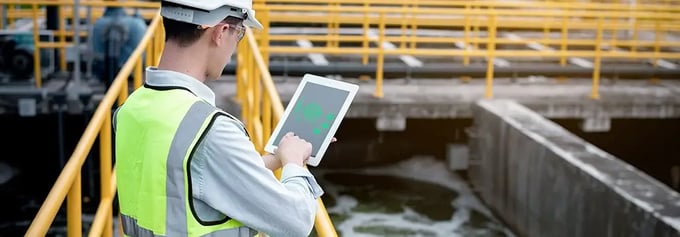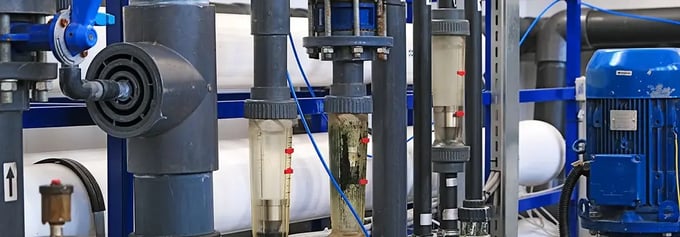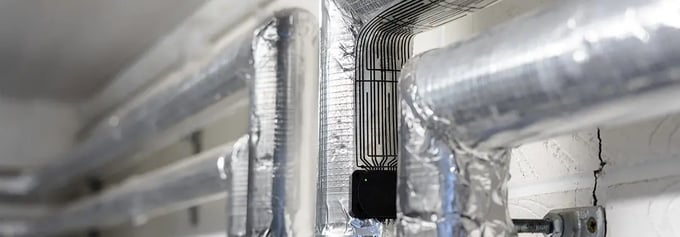If the world is even to come close to the international goal of net-zero greenhouse gas emissions by 2050, we must figure out how to reduce the carbon footprint of wastewater treatment. The water industry needs better data about its infrastructure. This obstacle is preventing us from achieving one of the most important ways to reduce carbon emissions: operational efficiency.
Processing wastewater is highly energy-intensive. Globally, it consumes around 1.75M gigawatt-hours of electricity each year. This is more than the total electricity used by all households in the United States.
And this number is only set to grow. At last estimate, the global wastewater market expected to have over 80% of the world’s wastewater is untreated, but this number is shrinking – with grown at a compounded rate of 7.41% by 2030.
Water treatment operators are only recently gaining access to the latest technologies. This advancement can help them to achieve better results. The Internet of Things (IoT) plays an important part in improving wastewater management and minimizing energy consumption in the industry. IoT technology is essential for this.
We're examining the greenhouse gas emissions associated with waste water treatment. This includes its carbon footprint. We're also exploring why and where there is a need for improved operational efficiency.
We investigate how Internet of Things (IoT) technologies can assist operators. These technologies can help them collect accurate data about their systems. This data can reveal potential efficiency improvements.

What is the carbon footprint of wastewater treatment?
Wastewater treatment is rarely featured in popular media. When calculated as a percentage of the world’s overall greenhouse gas (GHG) emissions, it looks small – only 1.3%.
This figure is misleading. It only takes into account the GHGs directly produced. Organic matter from wastewater is a source of methane and nitrous oxide. Both of these are very potent GHGs. What calculations like this need to take into account is how energy usage is distributed amongst industries. Wastewater treatment indirectly has a large carbon footprint because of its energy needs.
Most approaches to wastewater treatment aim to remove organic matter from the water, then process the sludge produced to stop harmful quantities of carbon, nitrogen, and phosphates from entering the local environment. There are various ways this can be done, with resulting differences in how much energy they need and the GHG emissions they produce.
Wastewater treatment needs better operational efficiency
One of the most significant problems in reducing the carbon footprint of wastewater treatment is the need for more data.
This is an issue at a global level – the UN, in its most recent report, was only able to collect data from 42 countries, with data on industrial wastewater only available for 18.
Lack of data is also an issue at a national level. For example:
Lack of data and poor data quality stand in the way of efforts to improve operational efficiency. We need to better monitor energy usage and carbon and GHG emissions of wastewater treatment processes. This will help to effectively address this problem.
In the example of the UK, it is estimated that optimizations could easily reduce C02 emissions of the country’s wastewater treatment by tens of thousands of tonnes each year, but many solutions rely on a combination of better data and capital investment.

How the Internet of Things helps to build more efficient wastewater management
IoT has been a beneficial advancement in wastewater treatment. It has also improved the entire water management system. Smart water meters are one tool you’re likely already familiar with. They are becoming increasingly popular, and various jurisdictions heavily encourage their uptake.
The use of IoT technologies goes well beyond this. For example, in mid-2022, Scottish Water, Scotland’s public water provider, announced a £100M investment in IoT tech to improve its wastewater infrastructure.
Scottish Water recognizes the need for improved sewage monitoring. This monitoring would help to anticipate and prevent wastewater issues before they affect customers and the environment. Their goal is to achieve net-zero carbon emissions by 2040 through improved operational efficiency.
They understood that achieving their goal would be difficult. They had limited access to data about the quality of treatment and the status of important assets. This data was not up to date.

Sensor data collection and analysis from IoT systems, like the kind Scottish Water is implementing, has a number of key benefits:
- This tool can be used to predict maintenance needs and give early warnings of any potential problems. This decreases the likelihood of major leaks and blockages in wastewater infrastructure.
- IoT sensors can monitor chemical levels in wastewater, including carbon dioxide, nitrogen, and methane.
- Some sensors can also monitor water aeration, a key aspect of specific wastewater treatment processes.
- IoT systems can monitor and assess flow levels. This enables you to analyze and optimize water entering and leaving a wastewater treatment facility. This, in turn, supports energy use optimization throughout the treatment process.
IoT technology has great potential for the wastewater treatment industry. It can protect and extend the life of water infrastructure, optimize wastewater treatment processes and reduce energy requirements. This, in turn, reduces the carbon and overall GHG emissions footprint.

Join us as we help build a net-zero world!
The Severn WLD system has a significant purpose. It helps to conserve energy, water and reduce the carbon footprint of water infrastructure, such as wastewater.
We developed Severn WLD in response to a significant problem in implementing IoT tech in existing water infrastructure: space.
Spaces where we put pipes, outlets, and valves – whether in your office, home or wastewater treatment facility – weren’t designed with a need for bulky sensor hardware in mind. We made a flexible, paper-thin water sensor array that can be wrapped around pipes and fit into the tightest spaces. You can use it to monitor water wherever you need it.
Learn more about Severn WLD